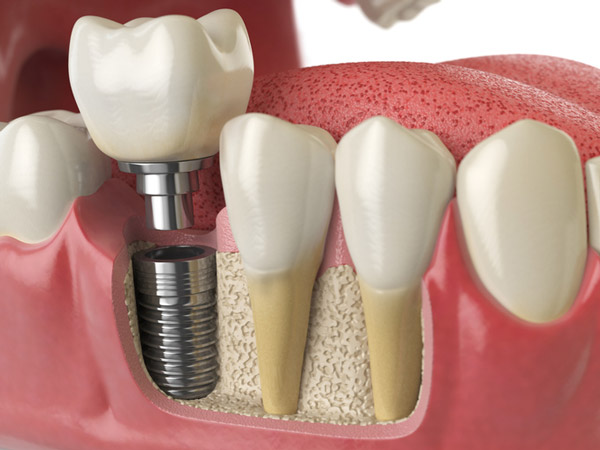Bone Grafting
Louisville, KY
 For a dental implant to be successful, you must have a sufficient amount of bone in the jaw. If your bone is too thin or soft, it may cause the implant to fail. Patients with inadequate bone may need to undergo a bone graft. For a dental implant to be successful, you must have a sufficient amount of bone in the jaw. If your bone is too thin or soft, it may cause the implant to fail. Patients with inadequate bone may need to undergo a bone graft.
Bone deficiencies can be the result of:
| • |
Genetic and developmental defects
|
| • |
Untreated tooth loss
|
| • |
Periodontal disease
|
| • |
Injury or trauma to the face |
United Smile Centres offers bone grafting to build up new bone in the area of your jaw that will eventually hold a dental implant. The procedure is relatively simple, and might be an integral step to improving the function and aesthetics of your smile!
Type of Bone Grafts
Graft material can come from a variety of sources. Regardless of which bone graft you receive, the results will be the same — new, healthy bone that will be able to support a dental implant.
There are four types of bone grafts:
| • |
Autograft. Taking bone from a bone-rich area of your body, and moving it to another. The bone may come from your chin, hip, or another part of your mouth.
|
| • |
Allograft. Taking bone from a human donor. This material comes from a tissue bank.
|
| • |
Xenograft. Taking bone from another animal, typically a cow.
|
| • |
Alloplast. Using synthetic materials produced in a laboratory. |
Bone Graft Procedure
As with any surgical procedure, we will need to discuss your medical and dental history before we can proceed. Be sure to ask questions and voice any concerns. A bone graft is usually a minor procedure that only requires the use of local anesthetic. For patients with severe anxiety, other forms of sedation are available.
During the procedure, our doctors will make a small incision in your gum tissue to access the underlying bone. We then place the graft material into the area of the bone that will support the implant. Over the next several months, the graft material will trigger your jaw to grow new, healthy bone. By the end of the process, your new bone will completely absorb and grow around the graft material.
After the procedure, you may be given antibiotics, pain medication, or antibacterial mouthwash. We will instruct you to avoid certain foods and unnecessary pressure on the graft site. Once your new bone fully develops, we can proceed with the rest of the implant process. If your graft is minor enough, it may be possible to place the implant immediately following the procedure.
Other Bone Augmentation
Depending on your circumstance, we may recommend other forms of bone augmentation, including:
| • |
Sinus lift. Upper posterior teeth (molars and premolars) are some of the hardest to restore. This area of the jaw tends to be naturally thin. A sinus lift will add more bone to this area. During the procedure, your sinuses are gently lifted to make room for the bone graft material.
|
| • |
Ridge modification. If your jaw is not wide enough to support an implant, you may need a ridge expansion. During the procedure, we will make a small division in the ridge, and fill it with graft material.
|
| • |
Socket preservation. After tooth extraction, we can preserve the socket and reduce bone loss. During the procedure, your socket will be filled with bone graft material to keep the socket in its original shape. |
Schedule a Consultation
Call (502) 899-3000, to schedule a consultation appointment now! |